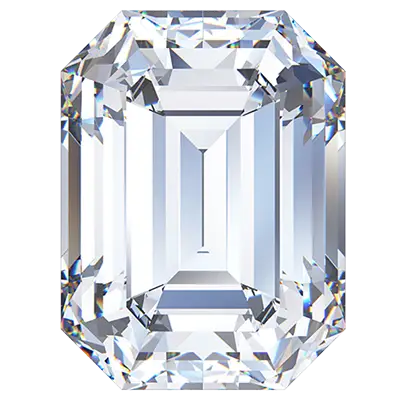-
HPHT
In HPHT, a natural diamond seed is placed into a special chamber along with a carbon starting material. The chamber is heated to temperatures near 1600 C (2900 F) with pressures exceeding 870,000 pounds per square inch. Under these conditions, the carbon starting material will migrate to the diamond seed and crystallize over a few weeks.
-
CVD
A second method, carbon vapor deposition (CVD), also uses a natural diamond seed, utilizes a vacuum chamber that reduces the temperature and pressure required to induce diamond crystallization. The vacuum chamber is filled with carbon-containing gas and then heated to 1200 C (2200 F). A beam of energy ionizes the carbon-containing gas, and the newly freed pure carbon crystallizes on the natural diamond seed.
-
Natural Diamonds vs. Lab Grown Diamonds
Lab Grown Diamonds are the same as Natural Diamonds – chemically, optically, and physically. Both are rated as a 10 on the Mohs scale of mineral hardness. A trained gemologist cannot differentiate between a lab grown diamond and a natural diamond without the use of high tech, specialized equipment.
The biggest difference between a natural diamond and a lab grown diamond is their journey to consumers. In 2003, the Kimberly Process was established “to ensure that diamond purchases were not financing violence by rebel movements and their allies seeking to undermine legitimate governments.” While this signified progress in creating a safer and more equitable diamond mining industry, it was also narrowly focused. -
Diamonds vs. Simulants
Cubic Zirconia and Moissanite are the most common diamond simulants and are significantly different from lab grown diamonds and natural diamonds. Simulants have different refraction patterns, thermal conductivity, and mineral hardness than diamonds. These differences make it easy to distinguish simulants from diamonds with the naked eye.
Lab grown diamonds are graded by the same independent diamond laboratories as natural diamonds using the same standards of quality, cut, color, clarity, and carat weight. The same report is created for lab grown diamonds and natural diamonds which details this information. Like natural diamonds, lab grown diamonds are available in all qualities and colors.
Benefits of Lab Grown Diamonds
- Affordable. Lab Grown Diamonds are 60%-70% less expensive than Natural Diamonds of the same size, quality, and color. Lab Grown Diamonds can be produced in a fraction of the time compared to natural diamonds resulting in a less expensive better-quality diamond with better clarity and color.
- Identifiable. Superia’s Certified Lab Grown Diamonds are lasered engraved on the girdle of each diamond with a unique serial number which matches the certificate number making your diamond easily identifiable.
- Environmentally Friendly. Lab Grown Diamonds require far less resources than Natural Diamonds to be created. When natural diamonds are mined from the earth, what is left behind can include chemicals, land waste and pollution,
Whether you call a Lab Grown Diamond a man-made diamond, an engineered diamond, or a cultured diamond, Lab Grown Diamonds are still a diamond. It’s as beautiful as anything you source from the Earth. For an ethically sourced, environmentally friendly, and more accessible diamond option, choose a Lab Grown Diamond by Superia.









